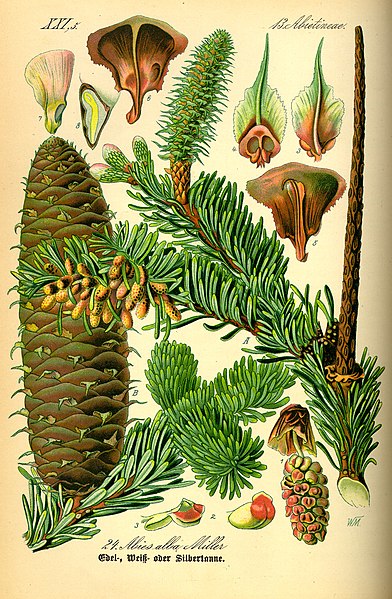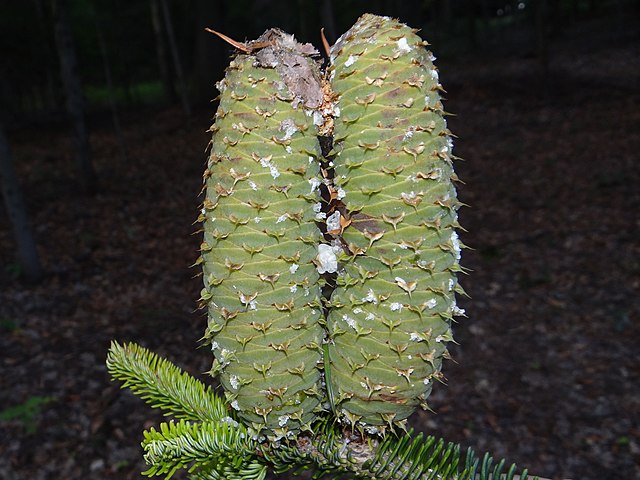Abies alba, the European silver fir or silver fir, is a fir native to the mountains of Europe, from the Pyrenees north to Normandy, east to the Alps and the Carpathians, Slovakia, Slovenia, Croatia, Bosnia and Herzegovina, Montenegro, Serbia, and south to Italy, Bulgaria, Kosovo, Albania and northern Greece; it is also commonly grown on Christmas tree plantations in the North East region of North America spanning New England in the US to the Maritime provinces of Canada.
Abies alba
Silver fir trunk and bark of a tree in Vallombrosa State Forest (Italy)
Illustration of several parts of the plant
Immature cone
Firs are evergreen coniferous trees belonging to the genus Abies in the family Pinaceae. There are approximately 48–65 extant species, found on mountains throughout much of North and Central America, Europe, Asia, and North Africa. The genus is most closely related to Cedrus (cedar). The genus name is derived from the Latin "to rise" in reference to the height of its species. The common English name originates with the Old Norse, fyri, or the Old Danish, fyr.
Fir
A. alba – the underside of leaves have two whitish strips formed by wax-covered stomatal bands; the bases of the needles are shaped like suction cups.
A. grandis foliage – upper side of the leaves
Atypical A. alba foliage from Dinaric calcareous fir forests on Mt. Orjen








